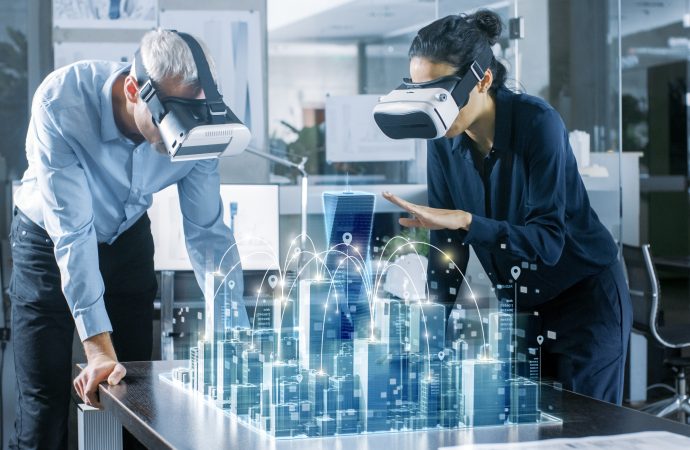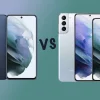AR and VR: The Next Generation of Immersive Experiences Augmented Reality (AR) and Virtual Reality (VR) are technologies that have emerged as key players in the digital transformation of numerous industries. While VR immerses users in a completely virtual environment, AR blends the virtual world with the real one. Both technologies are revolutionizing the way
AR and VR: The Next Generation of Immersive Experiences
Augmented Reality (AR) and Virtual Reality (VR) are technologies that have emerged as key players in the digital transformation of numerous industries. While VR immerses users in a completely virtual environment, AR blends the virtual world with the real one. Both technologies are revolutionizing the way we interact with the world, creating experiences that go beyond traditional screens. As hardware becomes more advanced and applications more diverse, AR and VR are poised to reshape entertainment, healthcare, education, retail, and even the workplace.
In this article, we explore how AR and VR are enhancing user experiences, their benefits across various sectors, and how the latest technological innovations are pushing these immersive experiences into the mainstream.
1. Advanced Hardware and Evolution of AR/VR Devices
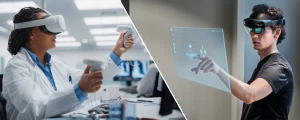
Image by Yandex.com
AR and VR technologies owe much of their rapid development to advances in hardware. In recent years, headsets, controllers, and tracking devices have become more sophisticated, offering users a smoother, more immersive experience.
Meta Quest 3 and Mixed Reality
Meta (formerly Facebook) has been a front-runner in pushing the boundaries of VR. With the Meta Quest 3, the company has taken a significant leap forward by blending both AR and VR into one headset. This mixed reality device allows users to experience fully immersive virtual worlds while maintaining awareness of their physical environment. The Quest 3 features higher resolution displays, better processing power, and advanced tracking, making it a perfect tool for gaming, productivity, and social interaction.
Sony PlayStation VR 2
Sony’s PlayStation VR 2 is another major player in the VR space. With enhanced visual fidelity, improved motion tracking, and new sensory features like haptic feedback and adaptive triggers, PSVR 2 offers a more immersive gaming experience. These improvements allow gamers to feel more connected to the digital world, whether they are navigating through a dystopian future or exploring vast alien landscapes.
Apple Vision Pro: The Future of AR Glasses
Apple’s Vision Pro headset is a glimpse into the future of AR. Announced in 2023, this high-end headset uses eye-tracking, spatial audio, and ultra-high-definition displays to create a truly immersive experience. Unlike the bulky headsets of today, the Vision Pro is designed to be sleek and lightweight, making it more accessible for everyday use. Apple’s focus on seamless integration between the virtual and physical worlds signals a future where AR glasses could become a staple in our daily lives, much like smartphones today.
2. Revolutionizing Healthcare with AR and VR
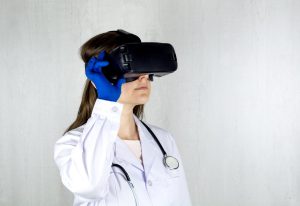
Image by Yandex.com
AR and VR are having a profound impact on healthcare, with applications that improve both patient care and medical training. These technologies allow for more precise surgeries, immersive medical simulations, and even mental health therapies.
Medical Training and Simulations
VR is transforming the way medical professionals learn and practice. In traditional medical training, students often rely on textbooks, cadavers, and lectures. With VR, they can step inside the human body, experiencing it from the inside out. This immersive experience allows them to practice complex procedures without the risk of harm.
Case Study: VR for Pain Management
One of the most promising uses of VR in healthcare is pain management. Studies have shown that VR can help patients manage chronic pain, reducing the need for opioid medications. For instance, SnowWorld, a VR program developed for burn victims, has been shown to significantly reduce pain perception during painful procedures by immersing patients in a virtual world of snowflakes and icebergs.
AR in Surgery and Diagnostics
AR is enhancing surgical precision by providing real-time data overlays. Surgeons can view vital patient information such as scans and vital signs directly on the operating table, reducing errors and improving outcomes. AccuVein, a portable device that uses AR to visualize veins, helps doctors find veins quickly and accurately, improving the efficiency of blood draws.
3. The Metaverse and Virtual Workspaces
The concept of the Metaverse — a collective virtual shared space — relies heavily on AR and VR. This immersive digital world can include virtual office spaces, social environments, and even entertainment hubs, all powered by these technologies.
Meta’s Horizon Workrooms
Meta’s Horizon Workrooms allows teams to collaborate in a virtual environment, using VR headsets to interact in a shared space. Unlike traditional video conferencing, Workrooms offers a more interactive experience, where users can sit around a virtual table, share documents, and brainstorm ideas as if they were in the same room. This virtual collaboration tool has been praised for its ability to bridge the gap between remote and in-office teams, offering an entirely new way to work.
Microsoft Mesh and Virtual Offices
Microsoft is also investing heavily in virtual workspaces with its Mesh platform. Using VR and AR, Mesh allows colleagues to meet in virtual environments, where they can use avatars to communicate and collaborate. These platforms are expected to become the norm for remote work in the future, offering more engaging and interactive meetings than traditional video calls.
4. AR in Retail and E-Commerce
AR is rapidly transforming the retail industry by providing immersive shopping experiences that help customers make better purchasing decisions. With AR, online shopping is no longer confined to static product images; customers can now visualize products in their own environments.
IKEA’s AR App
IKEA’s IKEA Place app allows customers to virtually place furniture in their homes using AR. By simply pointing their smartphone at a room, users can see how a particular piece of furniture will fit into their space. This interactive shopping experience not only helps customers visualize how products will look in their homes but also significantly reduces return rates by giving them a clearer idea of what to expect.
Sephora’s Virtual Makeup Try-Ons
Sephora uses AR to allow customers to try on makeup virtually. Using the Sephora Virtual Artist, customers can see how different products will look on their skin in real-time, without the need to physically apply the makeup. This technology has been particularly useful during the COVID-19 pandemic, when in-person testing of beauty products became challenging.
5. Gaming and Entertainment with AR and VR
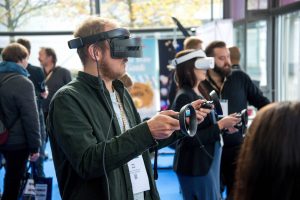
Image by Yandex.com
The gaming industry has been one of the biggest beneficiaries of AR and VR. These technologies are allowing players to experience games in new, more interactive ways, pushing the boundaries of storytelling and gameplay.
Half-Life: Alyx – A VR Gaming Revolution
Valve’s Half-Life: Alyx is often regarded as one of the best VR games ever made. The game offers players a fully immersive experience, where they interact with the world around them using hand controllers and headsets. The game’s detailed environments, engaging gameplay, and innovative use of VR make it a prime example of the future of gaming.
Pokémon Go – AR in Mobile Gaming
One of the most successful AR games ever, Pokémon Go took the world by storm in 2016. The game allowed players to catch virtual Pokémon that appeared in real-world locations, encouraging them to go outside and explore their environment. This blend of virtual and real worlds created a unique, engaging gaming experience that changed the way people viewed mobile gaming.
6. AR and VR in Education and Training
AR and VR are revolutionizing education by offering interactive, immersive learning experiences that go beyond traditional textbooks and classrooms.
Google Expeditions
Google Expeditions allows students to take virtual field trips to far-off places, from the Amazon Rainforest to ancient Rome, all from the comfort of their classrooms. With VR, students can explore historical sites, dive deep into the ocean, or even walk on the surface of Mars, providing a rich, engaging experience that would otherwise be impossible.
Vocational Training in VR
In vocational training, VR is being used to simulate real-world scenarios for students in fields like construction, aviation, and healthcare. For example, Virtual Reality Medical Center trains healthcare professionals by placing them in realistic emergency scenarios where they must respond to patient needs. This type of immersive training allows students to gain practical experience without the risks associated with real-life practice.
7. XR (Extended Reality) and Its Growing Importance
XR refers to a broader category of immersive technologies that includes AR, VR, and Mixed Reality (MR). XR is gaining traction because it allows users to interact with both physical and virtual environments simultaneously, creating richer, more interactive experiences.
Microsoft HoloLens
Microsoft’s HoloLens is one of the most advanced XR devices currently available. This mixed-reality headset blends digital and physical worlds, allowing users to interact with both. In industries like manufacturing, HoloLens has been used to visualize 3D models of products in real-world settings, helping engineers and designers make more informed decisions.
8. The Role of AI in Enhancing AR and VR Experiences
Artificial Intelligence (AI) plays a crucial role in enhancing the capabilities of AR and VR. From creating realistic avatars to adapting virtual environments in real-time, AI helps make immersive experiences more dynamic and personalized.
AI in Virtual Worlds
In VR games and environments, AI is used to create realistic, responsive characters that react to user actions. AI-driven characters, such as in Star Wars VR, respond to player movements and make the virtual world feel more lifelike. Additionally, AI can predict user behavior, allowing for more responsive and interactive environments.
9. Challenges and Opportunities in AR and VR Adoption
While AR and VR hold great promise, there are still challenges to overcome. The high cost of devices, the need for fast internet connections, and concerns over user comfort are all factors hindering broader adoption.
Cost and Accessibility
Despite the advancements in hardware, AR and VR devices remain expensive. However, as technology continues to improve, the cost is expected to decrease, making these immersive experiences more accessible to a wider audience. The rise of 5G technology will also help in reducing latency, improving AR and VR experiences.
Conclusion
AR and VR technologies are no longer just a futuristic vision; they are here, transforming industries and everyday life. From healthcare and education to gaming and retail, these technologies are enhancing user experiences and opening up new possibilities. As AR and VR continue to evolve, the future looks bright, with opportunities for even more immersive, interactive, and life-changing applications.
Whether in the form of the Metaverse, enhanced shopping experiences, or revolutionary medical treatments, AR and VR will continue to be at the forefront of digital innovation, shaping how we live, work, and play in the years to come.

